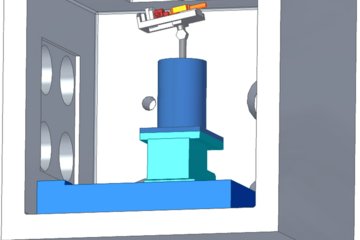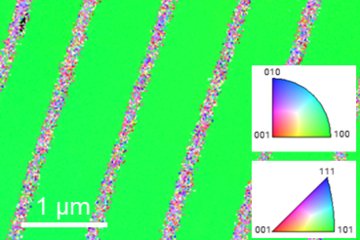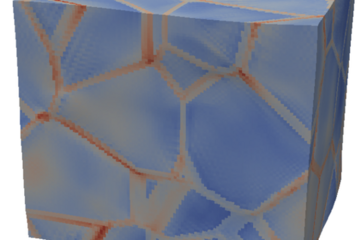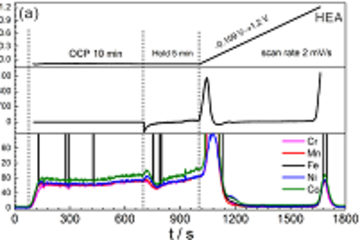All genres
241.
Talk
Ab-initio study of formation energies in steel and their relations to the solubility limits of carbon in austenite and ferrite. PAW workshop 2007, Goslar, Germany (2007)
242.
Talk
Residual Stresses in the Exoskeleton of a Homarus americanus Lobster. MECASENS IV, Wien (2007)
243.
Talk
Ab initio study of the anomalous volume-composition effect in Fe–Al and Fe–Ga alloys. Euromat 2007, Nürnberg, Germany (2007)
244.
Talk
Theory-guided design of Ti-based binaries for human implants. Euromat 2007, Nürnberg, Germany (2007)
245.
Talk
Theory-guided design of Ti-binaries for human implants. XVI. International Materials Research Congress, Cancun (Merrida), Mexico (2007)
246.
Talk
Ab initio prediction of elastic and thermodynamic properties of metals. Seminar in Friedrich-Alexander-Universitaet, Erlangen-Nürnberg, Germany (2007)
247.
Talk
Theory-guided design of Ti-based binaries for human implants. Spring meeting of the German Physical Society (DPG), Regensburg, Germany (2007)
248.
Talk
Ab initio study of the carbon-carbon interaction in iron. Spring meeting of the German Physical Society (DPG), Regensburg, Germany (2007)
249.
Talk
Anomalous equilibrium volume change of magnetic Fe–Al crystals. Materials Research Society fall meeting, Boston, MA, USA (2006)
250.
Talk
Bottom up design of novel Titanium-based biomaterials through the combination of ab-initio simulations and experimental methods. Materials Research Society fall meeting, Boston, MA, USA (2006)
251.
Talk
Ab initio study of human-bone-matched titanium alloys. 1. Harzer Ab initio Workshop, Clausthal-Zellerfeld, Germany (2006)
252.
Talk
Ab initio study of human-bone-matched titanium alloys. Masaryk University, Brno, Czech Republic (2006)
253.
Talk
Anomalous equilibrium volume change of magnetic Fe–Al crystals. Seminar at Universität Erlangen-Nürnberg, Erlangen, Germany (2006)
254.
Talk
Anomalous equilibrium volume change of magnetic Fe–Al crystals. Institute of Physics of Materials, Czech Academy of Sciences, Brno, Czech Republic (2006)
255.
Talk
Anomalous equilibrium volume change of magnetic Fe–Al crystals. Deutsche Physikalische Gesellschaft Spring Meeting of the Division Condensed Matter, Dresden, Germany (2006)
256.
Talk
Anomalous equilibrium volume change of magnetic Fe–Al crystals. American Physica Society March Meeting, Baltimore, MD, USA (2006)
257.
Talk
Anomalous equilibrium volume change of magnetic Fe–Al crystals. International workshop on Ab initio Description of Iron and Steel (ADIS2006), Status and future challenges, Ringberg Castle, Germany (2006)
258.
Poster
Invar effects in FeNiCo medium entropy alloys: from an invar treasure map to alloy design. DPG Regensburg 2019, Regensburg, Germany (2019)
259.
Poster
Off-stoichiometric composition of κ carbide in Fe–Mn–Al–C steels: An ab-initio study combined with experiment. ADIS 2016 Workshop, Tegernsee, Germany (2016)
260.
Poster
Ab-initio based prediction of magnetism in Fe–Mn–Al–C kappa-carbide precipitates in steels. ADIS Workshop , Ringberg, Germany (2014)











